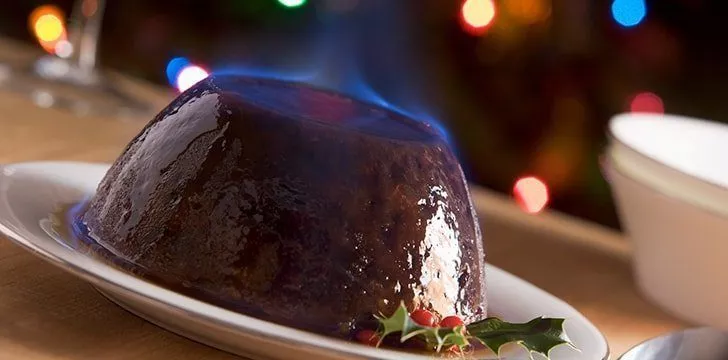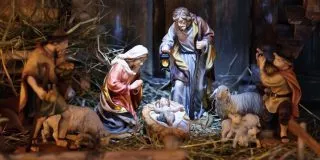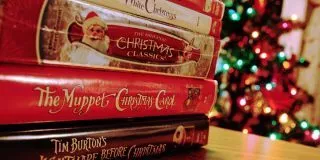The Christmas Pudding is a traditional dessert eaten during the holidays.
It became a family tradition when it was declared by Prince Albert in the Victoria Era.
A traditional Christmas Pudding was handmade – by chopping and mixing the ingredients before boiling and steaming.
The first handwritten recipe dates back to the Middle Ages when they were known as mince pies.
The Ingredients of its History

The ingredients were: partridge, pheasant, poultry, and rabbit.
Later on, apples, candied fruits (such as lemons and oranges), raisins, and sugar were added.
In the 14th Century, the Christmas Pudding had the appearance of porridge.
It was made of beef and mutton, with currants, raisins, prunes, spices, and wine. It was traditionally eaten before the Christmas celebrations went ahead.
In 1595, the Christmas Pudding was renamed the Plum Pudding and consisted of breadcrumbs, eggs, dried fruits, and spirits.
An unpopular pudding, the Puritans believed it was not a holy pudding and should not be eaten by the followers of God.
The Sunday before Advent, known as “Stir Up Sunday,” is the traditional date for making a Christmas pudding.
Everyone in the family should stir from east to west whilst making a special secret wish.
In 1714, King George I decided it should be eaten at Christmas and would feature no meat.
Modern Christmas Pudding

The Pudding nowadays features almonds, breadcrumbs, candied peel, cinnamon, currants, nutmeg, raisins, rum, and sultanas. It is boiled and steamed until ready.
It is stored until Christmas Day when it should be steamed for a further two hours before being topped with either brandy butter, cream, custard, or rum sauce.
The traditional pudding is topped with holly sprigs to bring good luck and healing properties.
The brandy poured on top is set alight to represent Jesus’ love and power for humanity.
A silver coin was later added to the Christmas Pudding mix, as this wouldn’t taint the mixture or corrode the coin. It would be wrapped in grease-proof paper as a “Christmas gift.”
To find it was to be seen as lucky, and it would be kept. Other party favors added would be a tiny wishbone (for luck), a silver thimble (for thrift), silver anchor charms (for safe harbor), or a ring (for future marriage and wealth).












